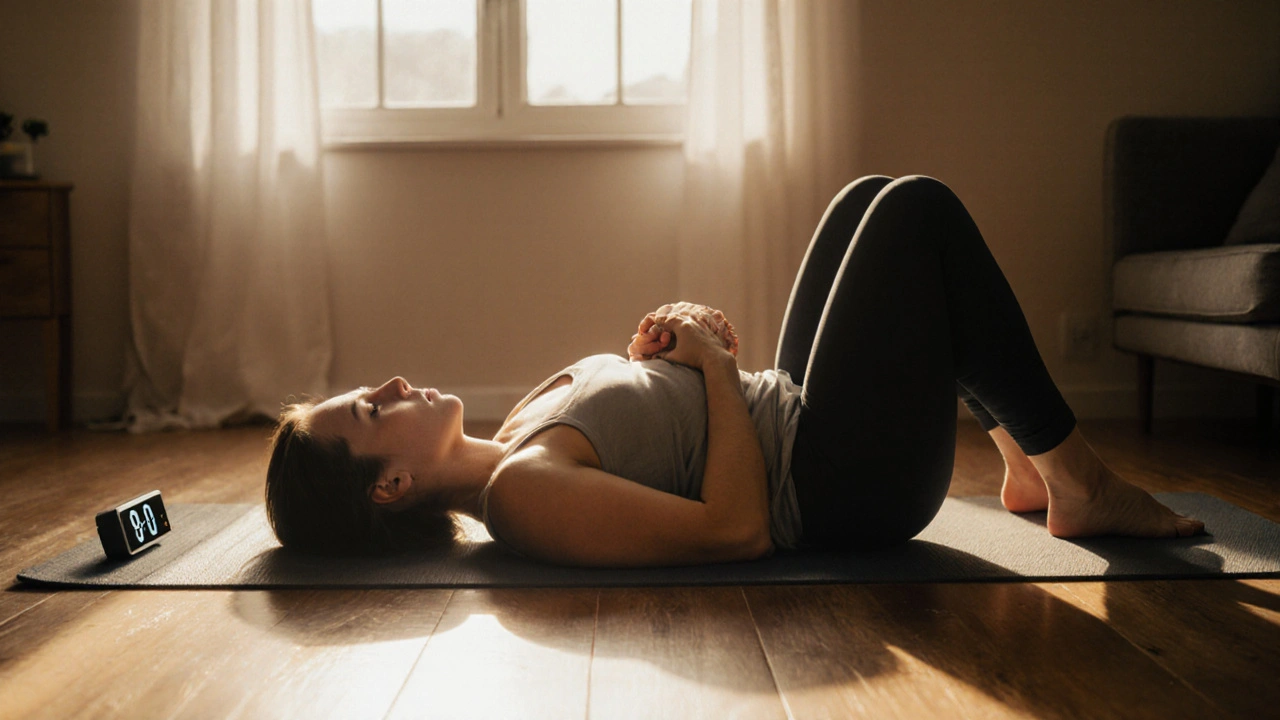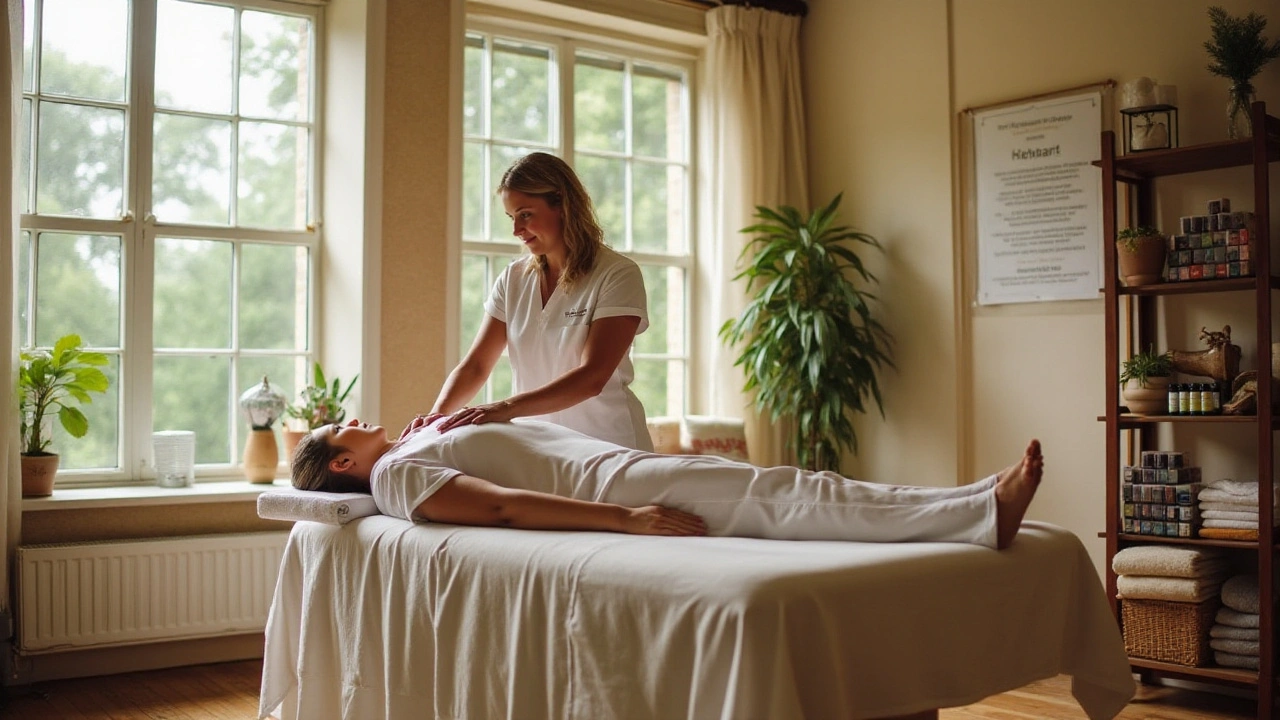Percussion Massage: The Ultimate Relief for Muscle Soreness and Tension
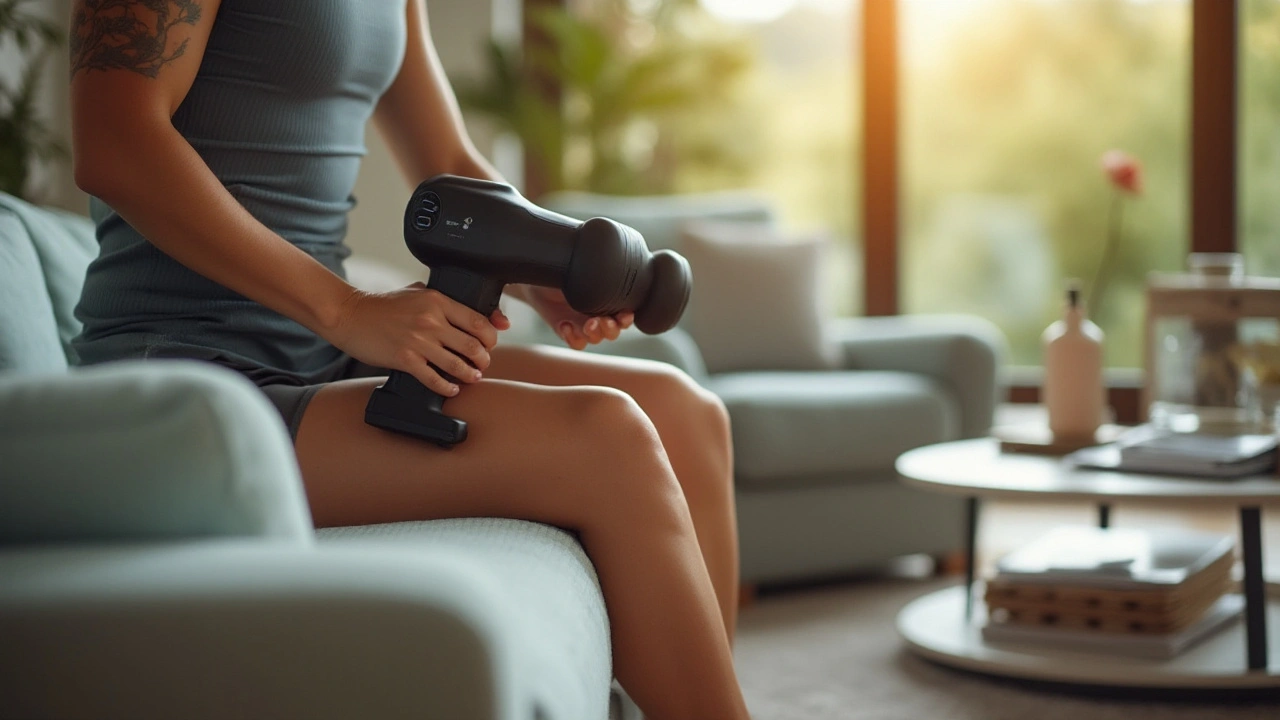
Ever felt those stubborn muscle knots or a lingering soreness that just won't go away? Percussion massage might be the answer you're looking for. This technique involves using a massage gun that delivers quick bursts of pressure to targeted areas, helping to relieve pain and enhance muscle recovery.
Originating from the sports world, it's now becoming common among fitness enthusiasts and everyday folks looking for relief. Curious to know how it works and why so many swear by it? Let's dive in.
What is Percussion Massage?
Percussion massage isn't just a trendy buzzword in the wellness community; it's a technique that has solid grounding in science and has been widely adopted by athletes, physiotherapists, and fitness enthusiasts. At its core, percussion massage involves the use of a device, often referred to as a massage gun, that delivers rapid, concentrated pulses of pressure into the muscle tissue. These devices are typically handheld and come with various attachments designed to target different muscle groups.
What makes percussion massage stand out is its ability to penetrate deep into muscle fibers. This technique uses a method called percussive therapy to reach layers of muscle that are difficult to target with traditional massage methods. By delivering bursts of pressure at high speeds, the massage gun helps increase blood flow to the affected area, breaks up scar tissue, and reduces inflammation. According to Dr. Kelly Starrett, a renowned physical therapist and author, "The rapid movements help disrupt the muscles at a deeper level, promoting faster recovery and reduced pain."
So how exactly does a massage gun work? Most devices feature a motor that drives a soft, round attachment back and forth against the skin. The speed and depth of these movements can usually be adjusted to suit your comfort level, making it a versatile tool for different conditions. From muscle pain after a workout to chronic issues like tendinitis, percussion massage can offer targeted relief. It can also help improve range of motion, making it easier for people to maintain their fitness routines without being held back by soreness.
Different Types of Devices
Massage guns come in various shapes and sizes, catering to different needs. Some are lightweight and portable, perfect for people who travel frequently or need quick relief on the go. Others are more robust and offer features like Bluetooth connectivity, so you can track your sessions via an app. Many models also come with a variety of attachments, such as flat heads for larger muscle groups or bullet heads for pinpoint accuracy on smaller areas.
It's worth noting that not all percussion massage guns are created equal. When choosing one, it's essential to consider the device's speed (measured in percussions per minute) and amplitude (how far the attachment travels). Higher speeds are typically better for warm-up routines, while slower, more forceful settings can be more effective for deep tissue work. Some massage guns also offer heat settings or adjustable grips for enhanced comfort and effectiveness.
The convenience of having a massage gun at home cannot be overstated. Unlike scheduling appointments with a massage therapist, you can use your device anytime you feel discomfort or need to relax tense muscles. This flexibility can be especially beneficial for athletes who need immediate post-workout recovery or anyone dealing with persistent muscle pain.
Percussion massage is revolutionizing the way we approach muscle recovery, offering fast, effective relief at the touch of a button. — Dr. Kelly Starrett
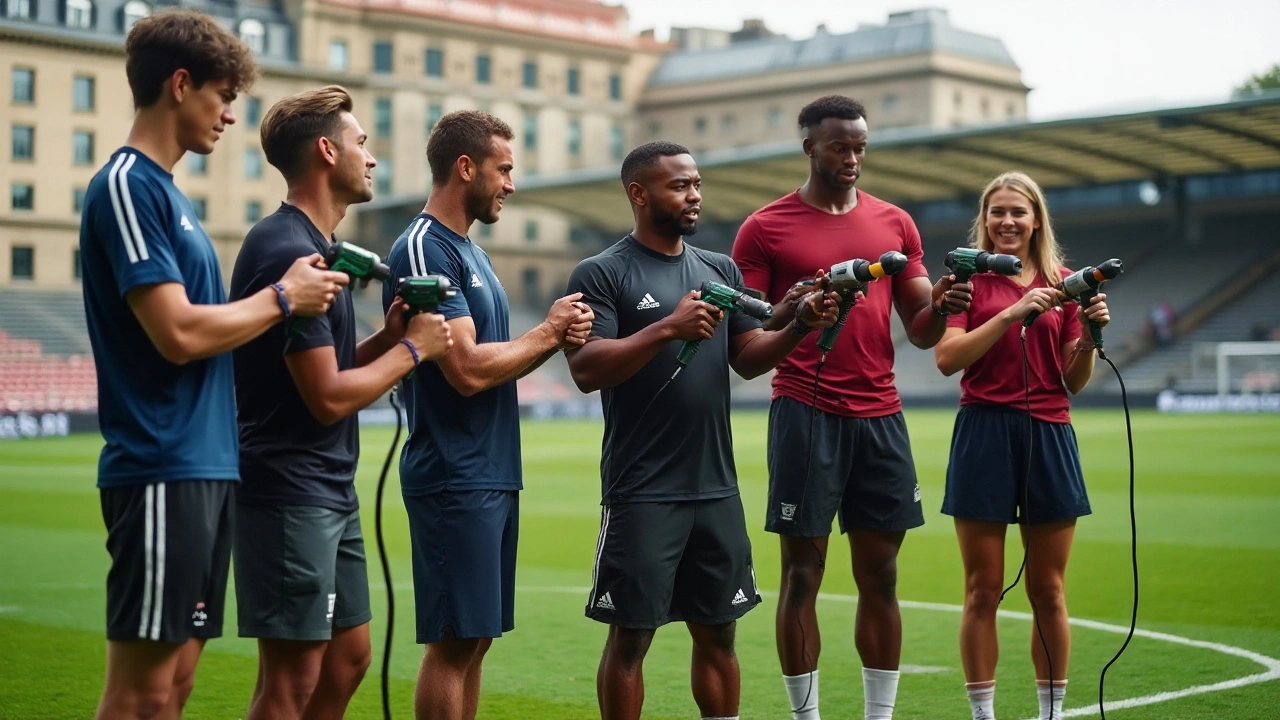
How Does It Work?
Percussion massage works by delivering rapid, concentrated pulses deep into your muscle tissues. These pulses are generated by a device often referred to as a massage gun. When the device is activated, its head moves in a back-and-forth motion, creating high-frequency vibrations that penetrate deep into the body's soft tissues. This action effectively breaks up knots, improves blood flow, and promotes muscle recovery.
The key to understanding percussion massage is recognizing the depth and intensity of the impact. Unlike traditional massage techniques that rely on hands or other manual tools, percussion massagers use mechanical force to reach deeper muscle layers quickly, providing immediate relief. The device's head moves at various speeds and intensities, which can be adjusted according to your comfort level or specific pain points.
Percussion Massage Mechanism
The mechanism behind a percussion device is relatively straightforward. At its core, a small motor powers a hammering action that propels the device's head against the targeted muscles. The rapid hits stimulate the muscle fibers, increasing circulation and promoting the release of lactic acid, which often causes soreness after a workout. By boosting blood flow, these tools help transport oxygen and essential nutrients to your muscle tissues, speeding up the healing process.
One interesting fact is that these tools have settings for different massage heads, each designed for specific purposes. For instance, a dampener head is softer and ideal for tender areas like joints or bones, while a standard ball head is better suited for larger muscle groups. The various heads and speed settings ensure that the massage therapy can be tailored to individual needs, providing maximum effectiveness.
The Journal of Athletic Training states, "Percussion massage devices have shown promising results in reducing delayed onset muscle soreness (DOMS) and improving muscle performance." This statement highlights the scientific backing for using percussion devices in muscle recovery.
The Science Behind the Technique
The science supporting the use of percussion massage lies in its ability to enhance muscular and cellular recovery. When muscles endure stress from physical activities, micro-tears occur, causing discomfort and soreness. The pulsating action of percussion devices helps to repair these tiny tears by increasing cellular activity and facilitating the removal of waste products like lactic acid.
Another scientific aspect worth noting is the stimulation of nerve receptors in our skin and muscles during percussion massage. This stimulation can block pain signals from reaching the brain, resulting in almost immediate pain relief. The effects are similar to the 'gate control theory' of pain management, which proposes that stimulating certain nerve fibers can close 'gates' to pathways that send pain signals to the brain.
In summary, percussion massage isn't just a trendy new therapy; it's a well-supported method backed by science and practical benefits. By understanding how it works, individuals can effectively utilize this innovative technique to manage muscle pain and shorten recovery times.
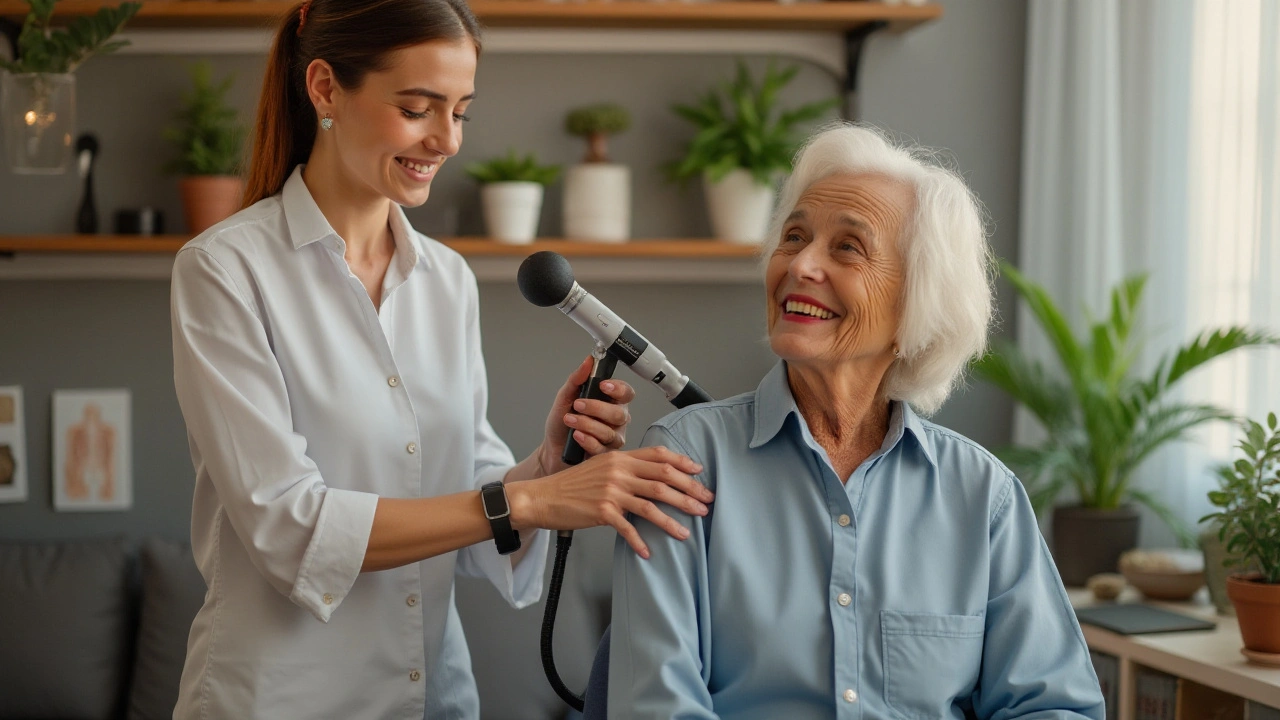
Benefits for Muscle Recovery
Percussion massage has quickly become a go-to solution for athletes and fitness enthusiasts alike, and it's not hard to see why. One of the biggest benefits is its ability to speed up muscle recovery. After a rigorous workout, muscles can accumulate lactic acid which causes that familiar post-exercise soreness. Percussion massage helps disperse this lactic acid, promoting faster relief and quicker recovery.
Another advantage is increased blood flow to targeted areas. The rapid tapping motion of the massage gun stimulates circulation, bringing more oxygen and nutrients to muscles. This helps not only in healing sore spots but also in reducing inflammation. Improved circulation can leave your muscles feeling rejuvenated and ready for another workout session.
Besides aiding in recovery, percussion massage can improve your flexibility. By working out stubborn knots and muscle tightness, your range of motion gets a boost. This is particularly useful for athletes who require agility as part of their training. And let's not forget the feeling of relief when a stubborn knot is worked out, offering immediate comfort.
It's not just for athletes either. People who spend long hours sitting at a desk can benefit significantly from percussion massage. The ease of use and portability of modern massage guns make them perfect for a quick session during a lunch break or after work. These devices can target shoulders, neck, and lower back areas that often suffer from prolonged sitting.
Even professional therapists recommend incorporating percussion massage into a regular wellness routine. According to Dr. Emily Kowalski, a certified physical therapist, “The rapid pulses can effectively stimulate muscle fibers and deep tissue, providing relief that's superior to traditional methods.”
Moreover, this type of massage can be excellent for those who suffer from chronic pain conditions. By consistently breaking down muscle tightness and increasing circulation, individuals often find long-term relief. It's a holistic and non-invasive option worth considering if you struggle with recurring pain.
Many also find that percussion massage helps with mental relaxation. The rhythmic pressure has a soothing effect that can reduce stress and anxiety levels, making it a form of therapy for both body and mind. This dual benefit makes the experience enriching and rewarding.
In summary, whether you are an athlete needing swift recovery, someone with a desk job, or just someone seeking overall well-being, percussion massage offers an array of benefits. Combined with its ease of use and effective results, it's no wonder that more people are opting for this modern solution to muscle pain and tightness.
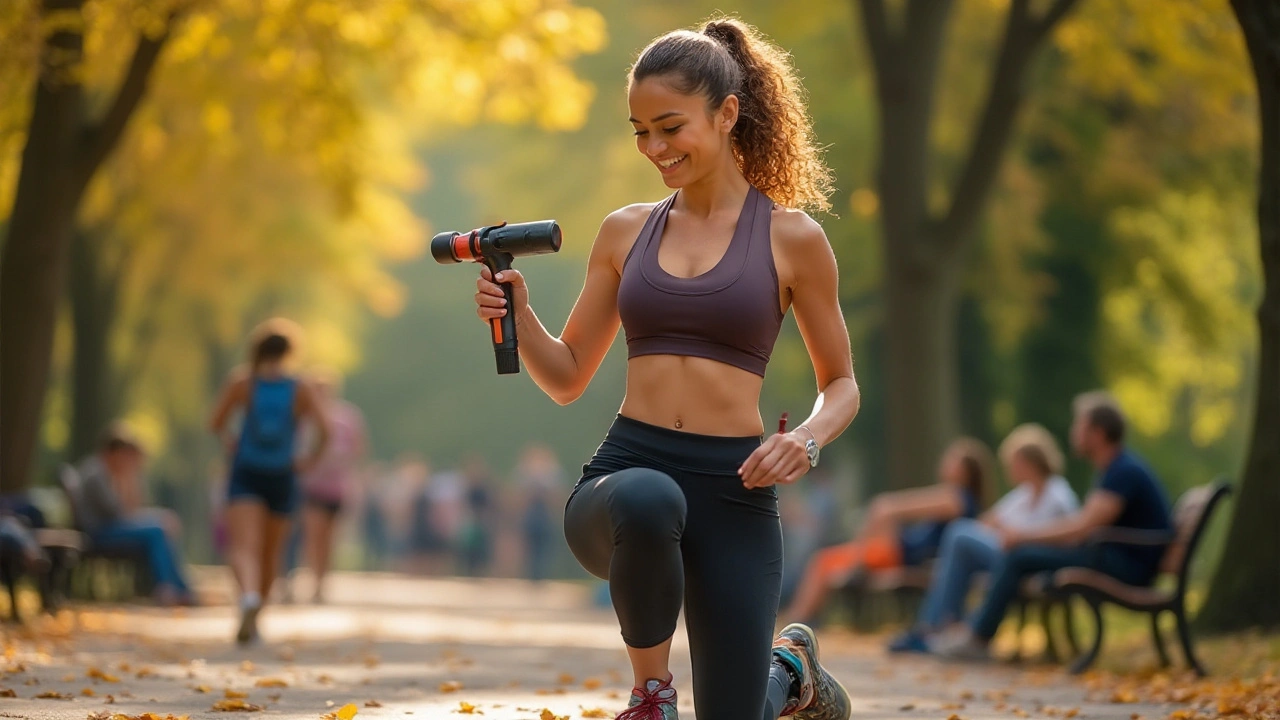
Tips for Best Results
Using a percussion massage gun effectively can make a significant difference in your recovery process. Here are some practical tips to help you get the most out of your percussion massage sessions:
Choose the Right Device
Not all percussion massagers are created equal. Look for a device that fits your needs, whether you're an athlete, a fitness enthusiast, or someone who deals with chronic muscle pain. Features like adjustable speed settings, interchangeable heads, and user-friendly designs can make a big difference. Always read reviews and consider reputable brands like Theragun and Hypervolt.
Warm-Up Your Muscles
It's essential to prepare your muscles before you start your percussion massage. A quick warm-up, such as light stretching or a few minutes on a stationary bike, can reduce the risk of injury. Warming up gets the blood flowing, making the massage more efficient.
Apply the Right Amount of Pressure
While it might be tempting to press down hard to tackle those stubborn knots, it's not always the best approach. Start with a lower setting and gradually increase the intensity based on your comfort level. Too much pressure can lead to bruising and excessive soreness.
Focus on Problem Areas
Identify the specific areas giving you the most trouble and spend extra time there. Using the targeted heads that come with most massagers, like the bullet or fork attachments, can help you get deeper into those tight spots. Don't rush through; a few extra minutes on a problem area can yield better results.
"The key to effective percussion massage is understanding your body and its needs. Always listen to your muscles and never overdo it," says Dr. Emily Cooper, a renowned physical therapist.
Stay Consistent
Consistency is critical if you want to see long-term benefits. Aim to use your massage therapy device regularly, especially after workouts or at the end of a long day. Regular sessions can keep muscle pain at bay and improve overall flexibility over time.
Hydrate and Rest
Post-massage care is just as important as the massage itself. Drinking plenty of water helps flush out toxins released during the massage, and adequate rest allows muscles to repair and grow stronger. Skimping on either can negate the benefits of your percussion massage.
Consult a Professional
If you're new to percussion massage or have underlying health conditions, consulting a physical therapist or healthcare professional is a good idea. They can guide you on the right techniques and settings to use, ensuring that you get the most benefit without harming yourself.
Incorporating these tips into your muscle recovery routine can make a significant difference. Experiment with different settings, heads, and routines to find what works best for you. Remember, the ultimate goal is to alleviate muscle pain and improve your quality of life.

